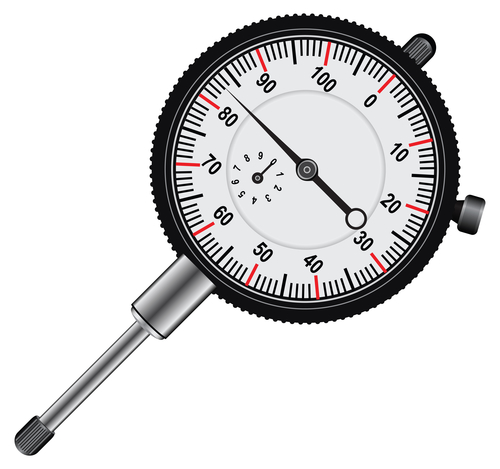One of the most popular reasons for using a dial indicator is ease of use. Sometimes it is not necessary to take very precise measurements, but you may still need to know that the measurement of something is within the parameters you expect. This is where a dial indicator excels. If you do not need use extensive or very accurate interpreting skills, then the dial indicator is the perfect tool for you and as it is very cheap to acquire, it is cost-effective too.
Cheaper But Just As Sensitive
Just because dial indicators are cheaper than digital or electronic indicator tools does not mean their calibration should be taken for granted. You still need to take great care in storing them effectively, so they remain efficient every time you use them. Here is a short list of do’s and don’ts to ensure your dial indicator remains in tip top condition:
- Do ensure you always protect the spindle by keeping it clean
- Do ensure the indicator hand is able to move freely. It must be able to move to its fullest extent as well as to the zero end of the scale in one fluid movement
- Do ensure you use your indicator correctly by securely affixing it to the holding device
- Do use your dial indicator often to prevent the spindle from sticking. Even testing it periodically throughout a month will ensure the spindle continues to move freely, especially if stored correctly
- Do ensure you keep your dial indicators stored away correctly in a dry place and try to keep them covered to minimize dust and moisture getting into the dial
- Do clean the dial with warm soapy water and try to keep the dial clean and dry at all times
- Do ensure you carry our regular testing of the indicators
- Do keep the reference surface clean
- Don’t use an indicator that has been hit with something heavy or dropped. If this happens then you should try it to ensure it still does its job correctly
- Don’t over-tighten contact points or adapters. This can cause a distortion in the measurements or cause the spindle to bind or the mechanism to stick
- Don’t forget to look at ways you can achieve a better outcome, such as considering accessories to make your indicator more efficient. These kinds of accessories include right angle attachments or lifting levers
- Don’t lock your indicator into position without first setting it the gage tension correctly
- Don’t treat indicators with sudden or harsh movements or blows, as this can affect the delicate balance
- Don’t try to change the set up by drilling into the case. This will cause debris to fall into the case and damage or affect the fluid movement of the spindle
It Will Last For Years
If you follow this simple guidance for the care of your dial instrument you will get years of wear from it. If you store it, treat it and handle it with respect then it will serve you well. If you dump it in the back of the garage or shed among a lot of heavy tools or machinery, then don’t be surprised if it fails to measure accurately the next time you try to use it.





